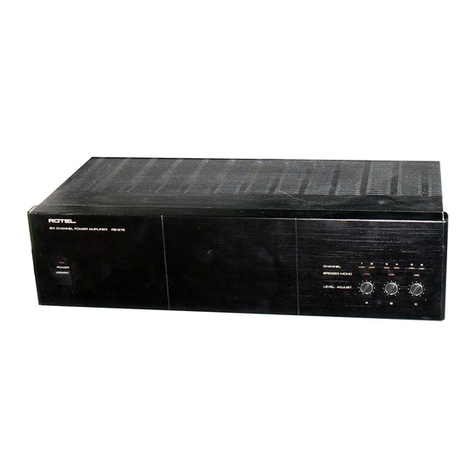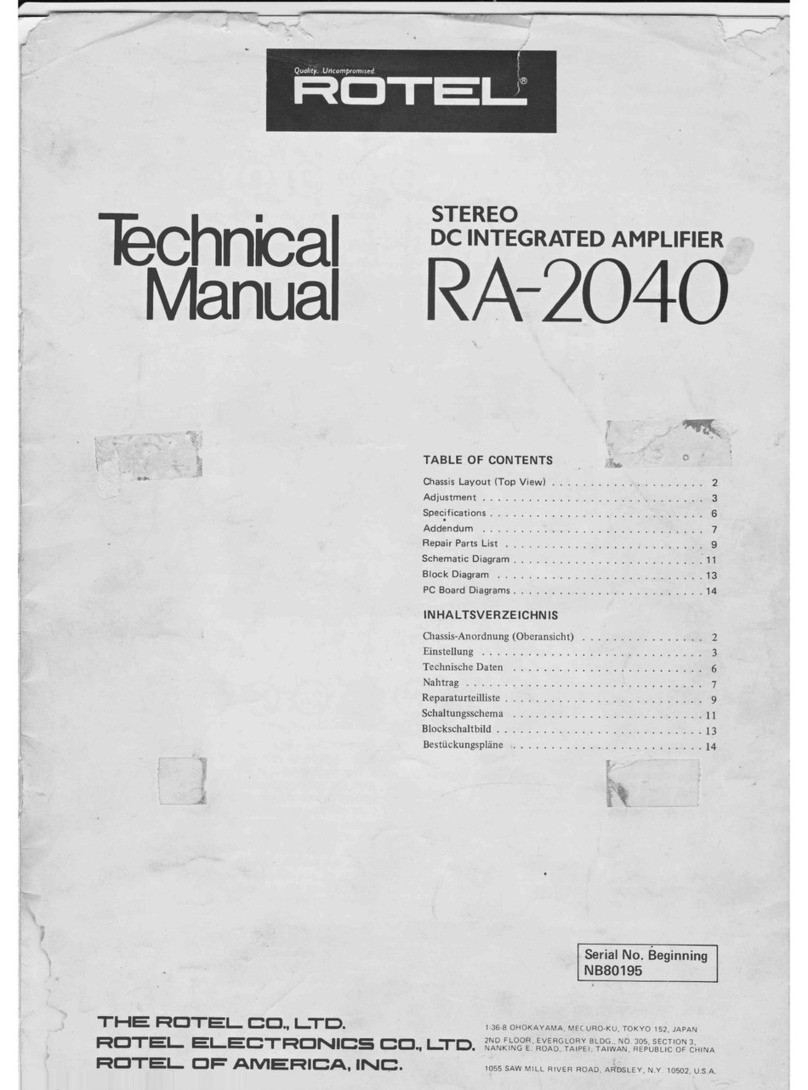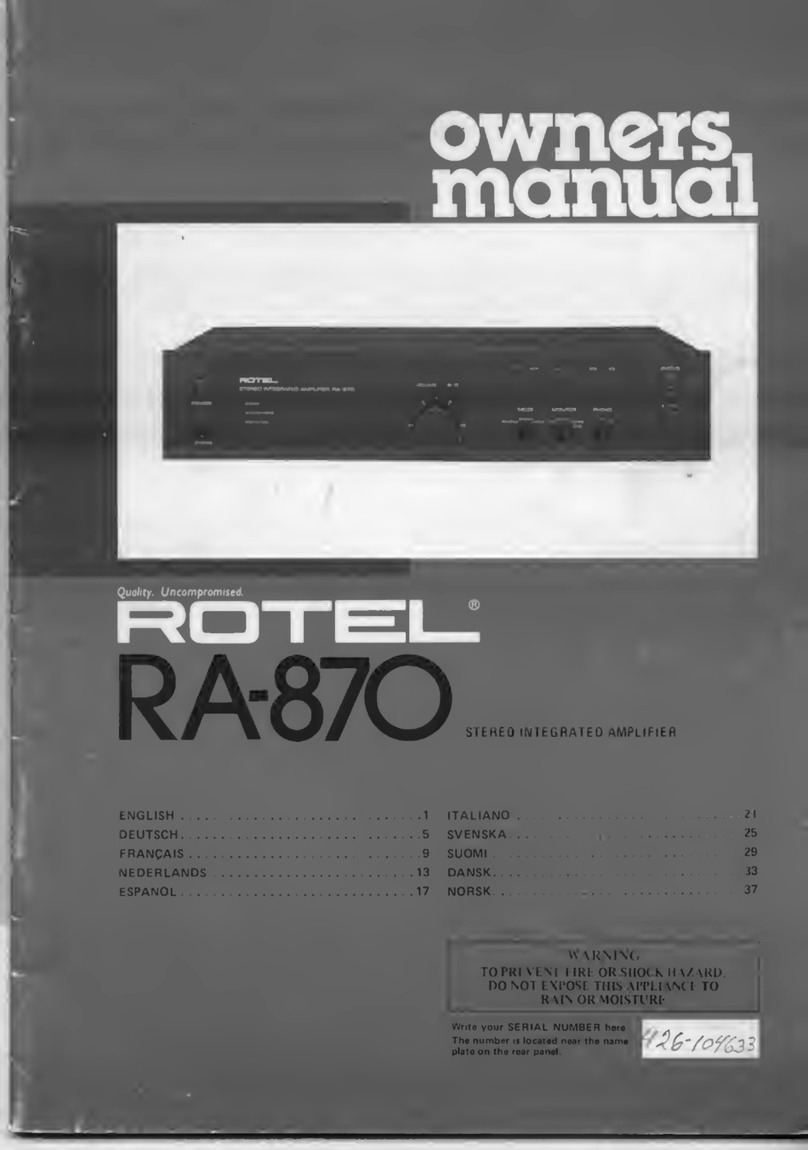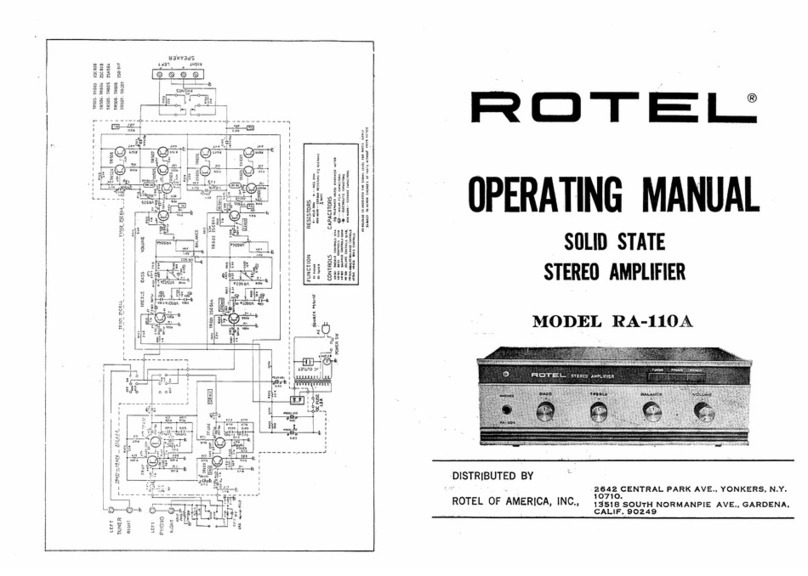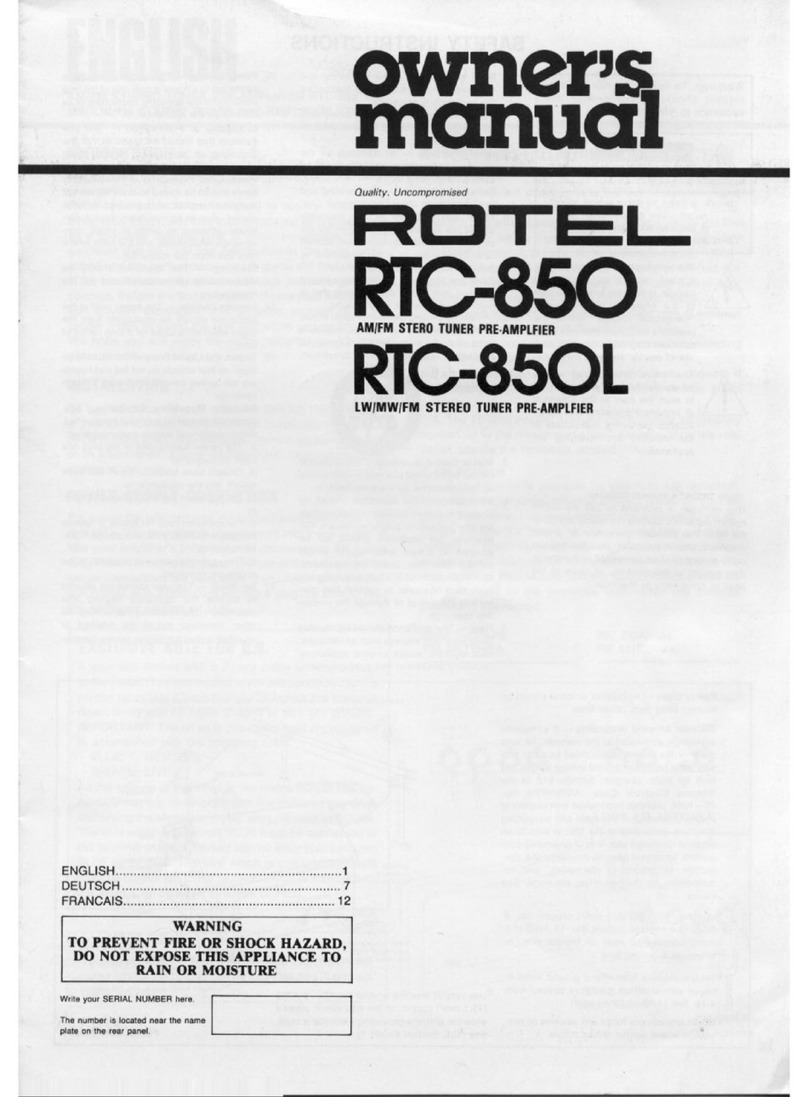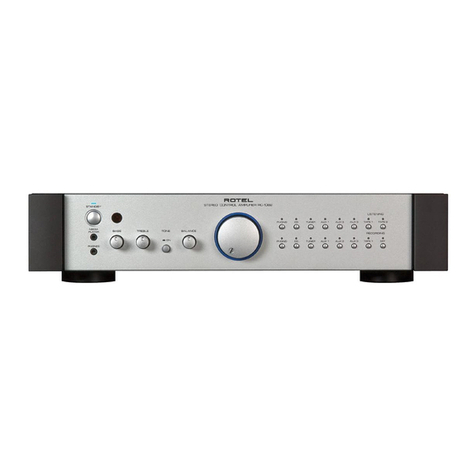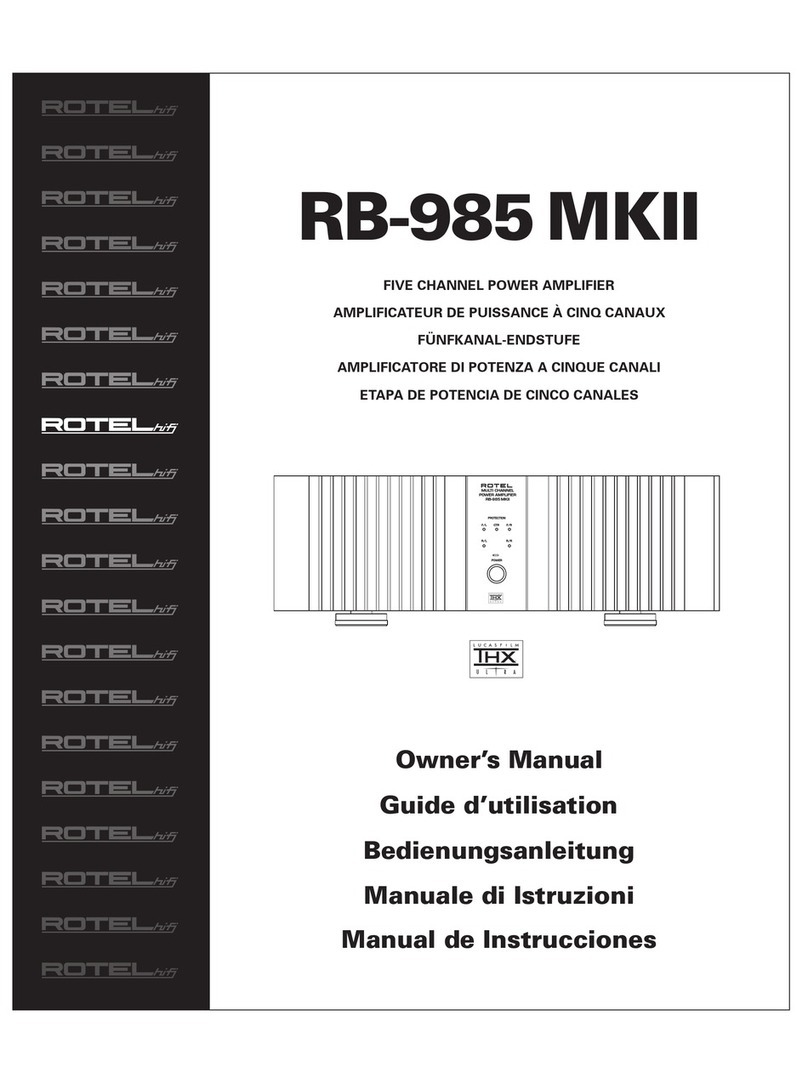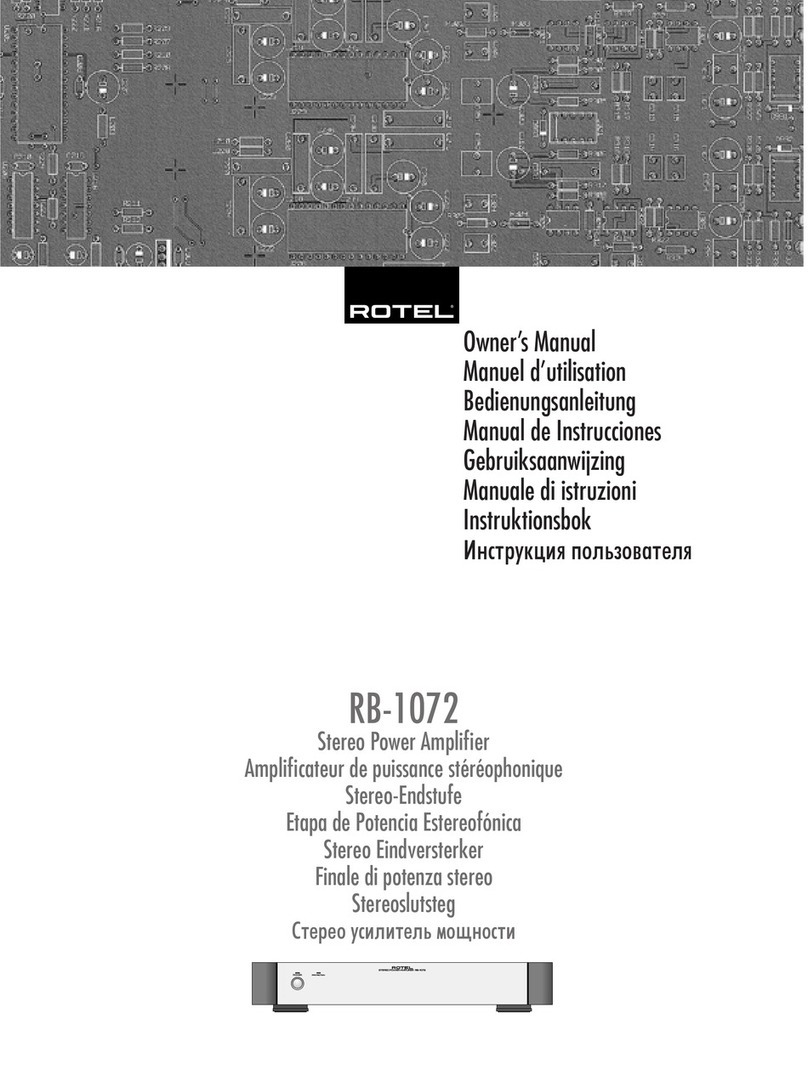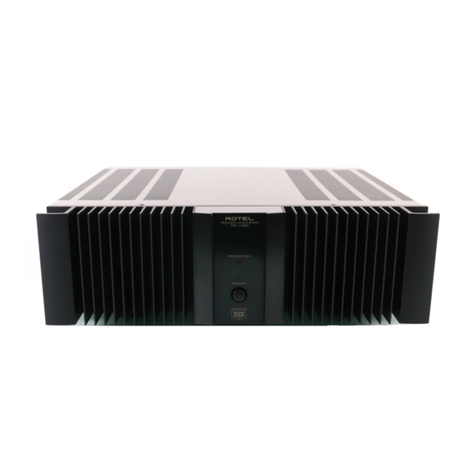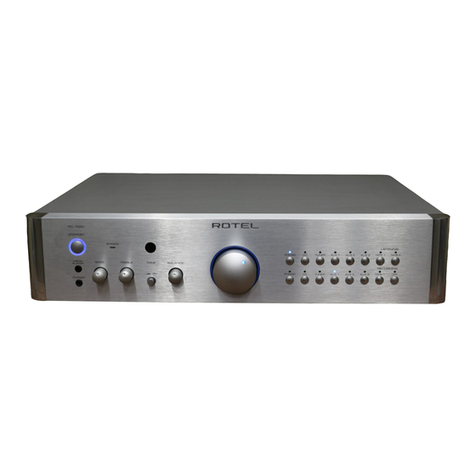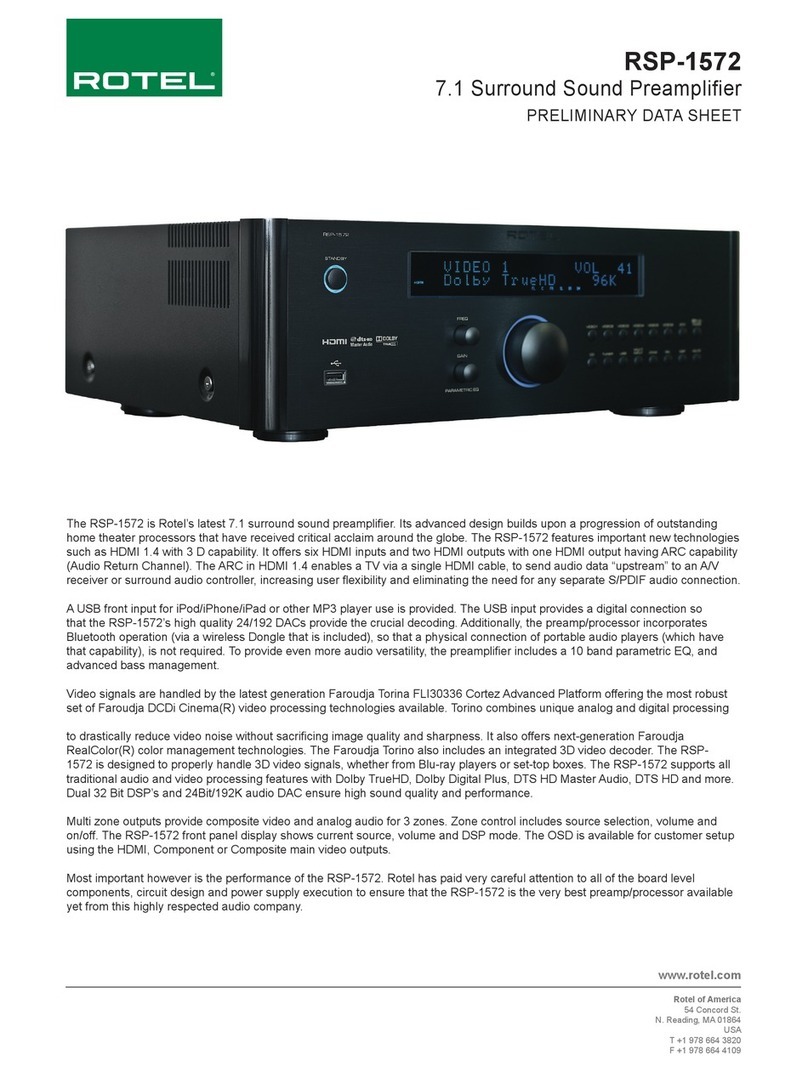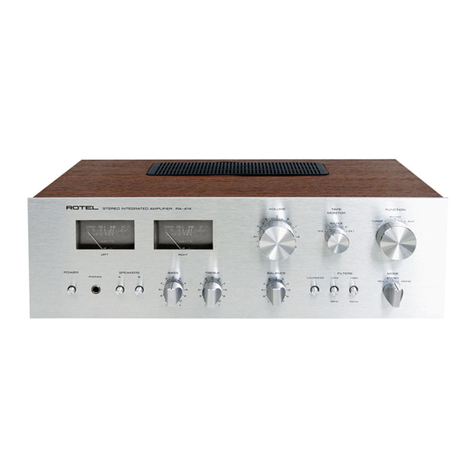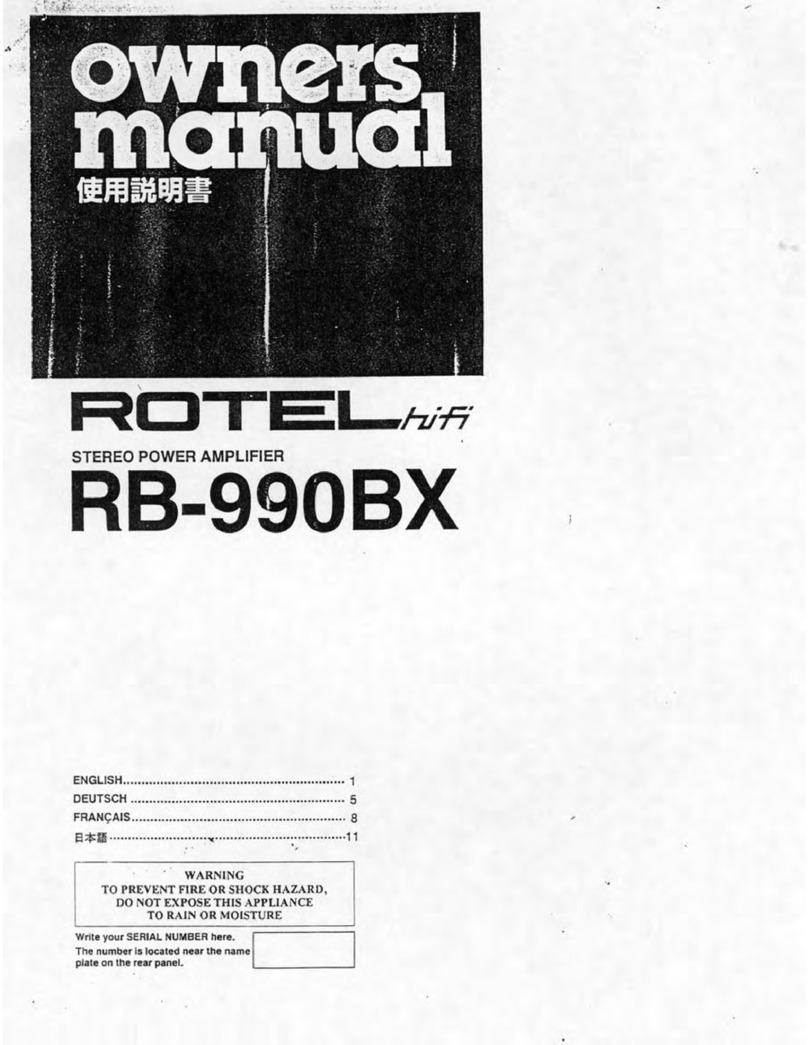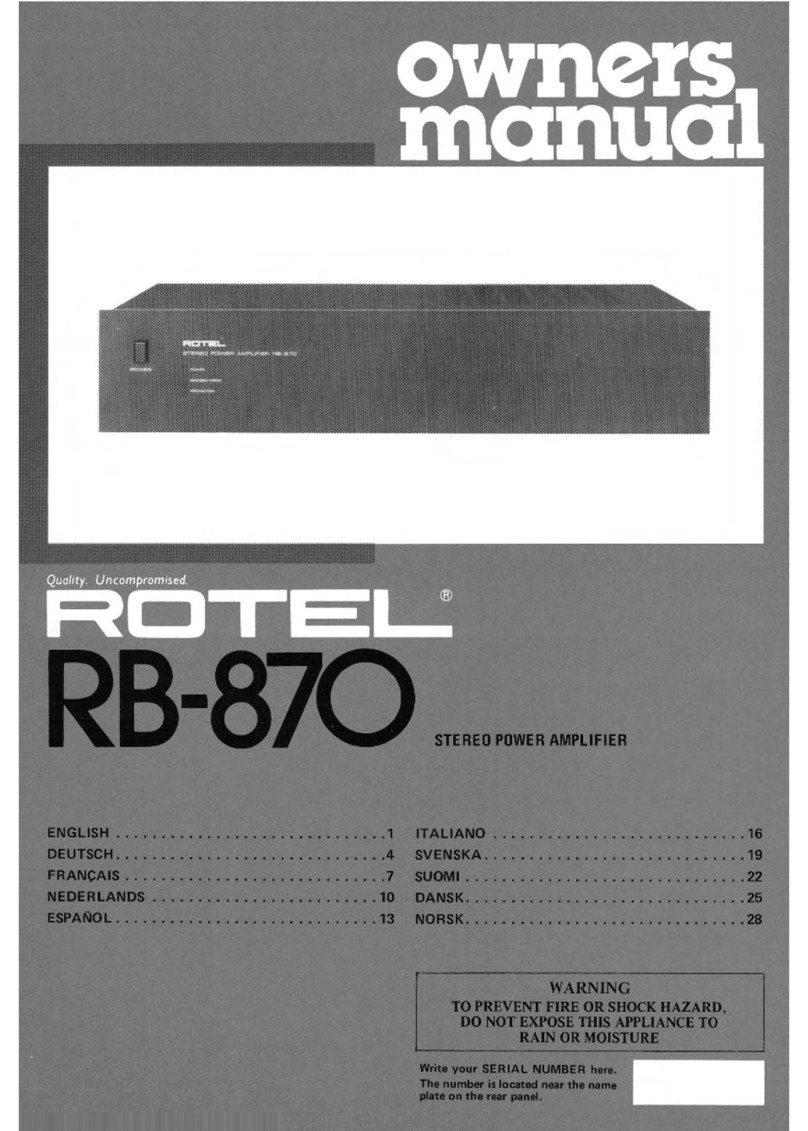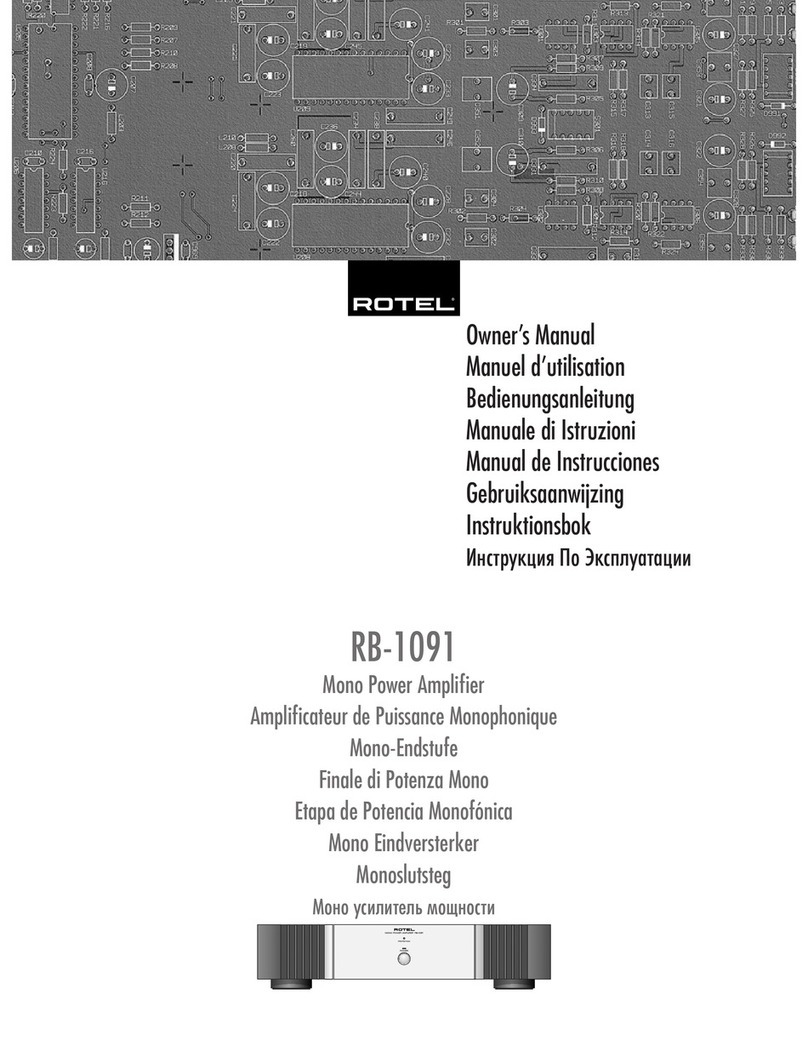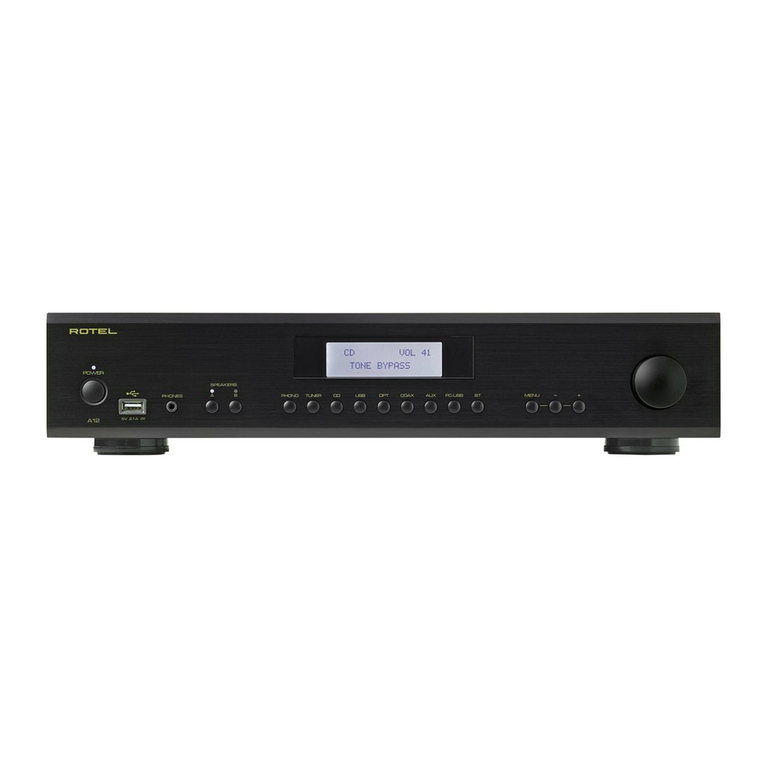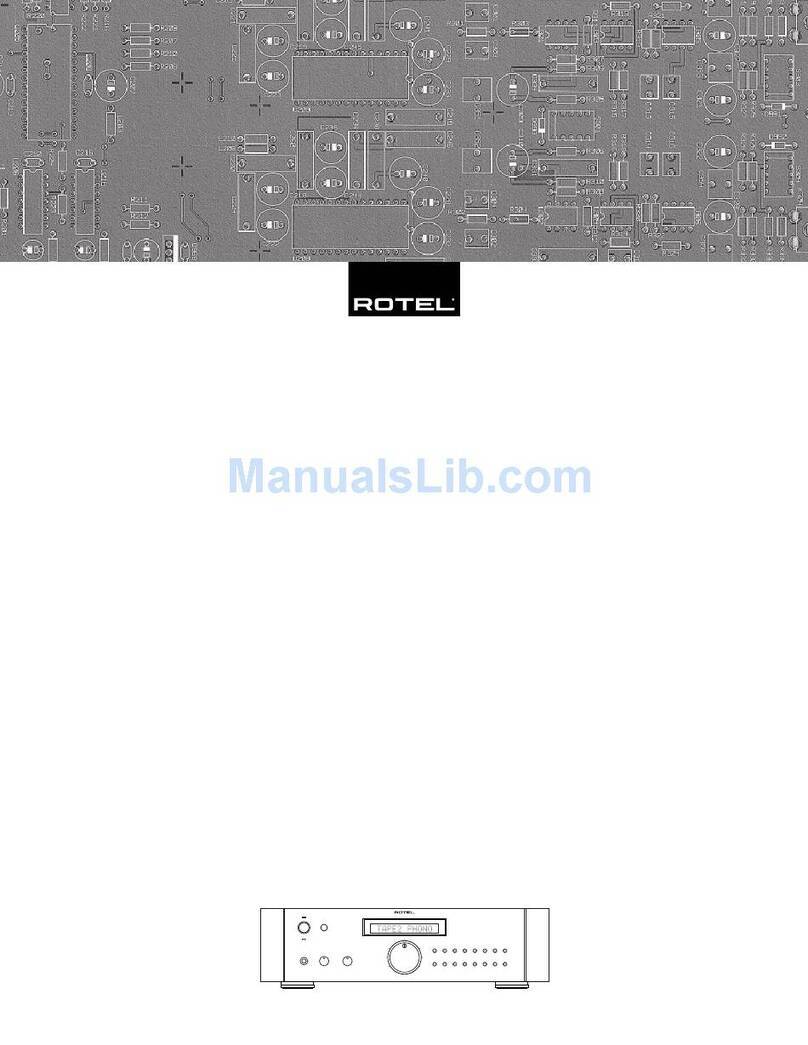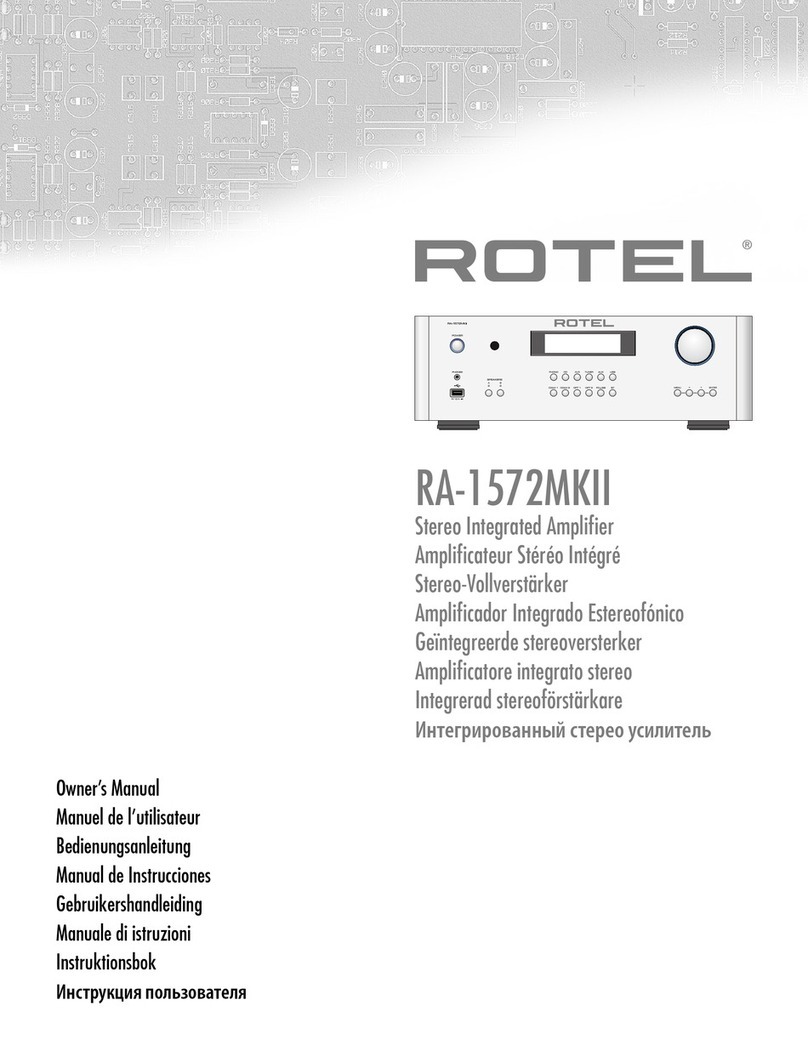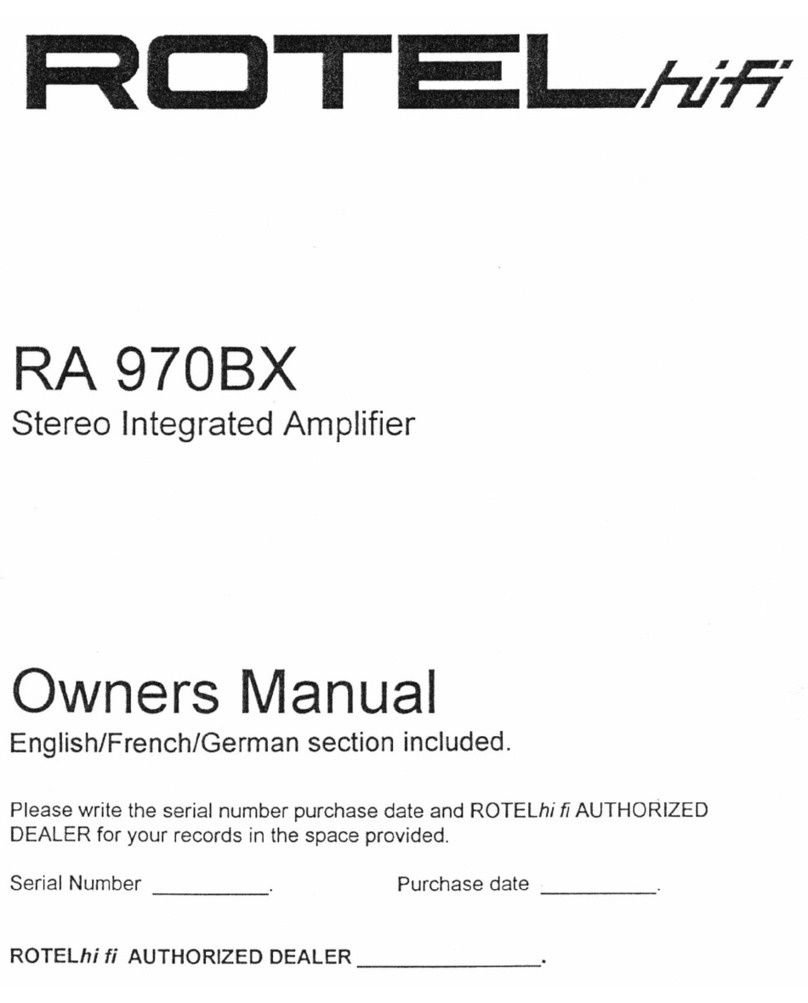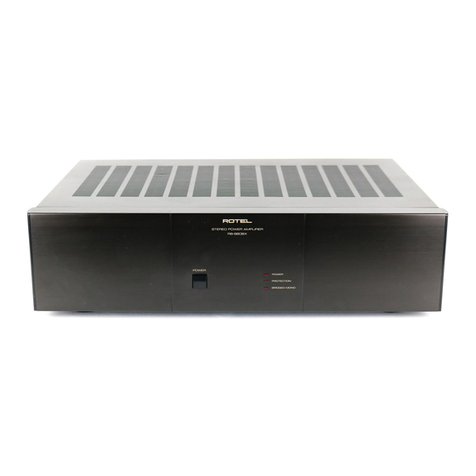8RB-1552MKII/RB-1582MKII Stereo Power Amplifiers
superb sound quality. High current capability allow the RB-1552MKII and
RB-1582MKII to drive the most demanding loudspeakers.
Be aware that the RB-1552MKII and RB-1582MKII are capable of high
power levels, in excess of 130 watts and 200 watts respectively per
channel. Make sure that your speakers can handle the power of the
amplifier. If in doubt about your speakers, ask your local Rotel audio
dealer for advice.
These amplifiers are straightforward in their installation and operation. If
you have experience with other stereo power amplifiers, you shouldn’t find
anything perplexing. Simply plug in the associated components and enjoy.
A Few Precautions
Please read this manual carefully. In addition to installation and operating
instructions, it provides valuable information on various system configurations
as well as general information that will help you get optimum performance
from your system. Please contact your authorized Rotel dealer for answers
to any questions you might have. In addition, all of us at Rotel welcome
your questions and comments.
Save the shipping carton and all enclosed packing material for future
use. Shipping or moving the amplifier in anything other than the original
packing material may result in severe damage that is not covered by
the warranty.
Fill out and send in the owner’s registration card packed with the amplifier.
Also be sure to keep the original sales receipt. It is your best record of
the date of purchase, which you will need in the event warranty service
is required.
Placement
The RB-1552MKII and RB-1582MKII generate heat as part of its normal
operation. The heat sinks and ventilation openings in the amplifier are
designed to dissipate this heat. The ventilation slots in the top cover
must be open. There should be 10 cm (4 inches) of clearance around
the chassis, and reasonable airflow through the installation location, to
prevent the amplifier from overheating.
Remember the weight of the amplifier when you select an installation
location. Make sure that the shelf or cabinet can support it. We recommend
installing the unit in furniture designed to house audio components. Such
furniture is designed to reduce or suppress vibration which can adversely
affect sound quality. Ask your authorized Rotel dealer for advice about
component furniture and proper installation of audio components.
AC Power and Control
AC Power Input 8
Your amplifier is configured at the factory for the proper AC voltage in
the country where you purchased it, either 120 volts or 230 volts. The
AC line configuration is noted on a decal on the back panel.
NOTE: Should you move your amplifier to another country, it may be
possible to reconfigure it for use on a different line voltage. Do not attempt
to perform this conversion yourself. Opening the enclosure of the amplifier
exposes you to dangerous voltages. Consult a qualified service person
or the Rotel factory service department for information.
NOTE: Some products are intended for sale in more than one country
and as such are supplied with more than one AC cord. Please only
use the one appropriate for your country/region.
Because of its high power rating, the amplifier can draw considerable
current. Therefore, it should be plugged directly into a wall outlet. The
RB-1582MKII must be plugged into a 3-pin polarized outlet. The RB-
1552MKII may be plugged into either a 2-pin or a 3-pin outlet. Do not
use an extension cord. A heavy duty multi-tap power outlet strip may be
used if it (and the wall outlet) is rated to handle the current demanded
by the amplifier and all the other components connected to it.
Be sure the POWER SWITCH 1on the front panel of the amplifier is turned
off (in the “out” position). Then, connect the supplied power cord to the
Power Connector 8 on the rear of the unit and the AC power outlet.
If you are going to be away from home for an extended period of time
such as a month-long vacation, it is a sensible precaution to unplug your
amplifier (as well as other audio and video components) while you are
away.
Power Switch and Power Indicator 1
The power switch is located on the front panel of your amplifier. To turn
the amplifier on, push the switch in. The ring around the switch will light
up, indicating that the amplifier is turned on. To turn the amplifier off,
push the button again and return it to the “out” position.
NOTE: Place the self adhesive ring over the light surrounding the
power switch if the blue light is too bright.
Trigger ON/OFF Mode Selector 3
The amplifier provides the option for manual or automatic power on/
off operation. These modes are selectable using a toggle switch on the
back panel.
With the switch in the +12V TRIGGER ON position, the amplifier is
turned on automatically when a 12V trigger signal is present at the 3.5
mm Jack of TRIGGER IN on the rear panel. The amplifier will go into
standby mode if the +12V signal is not present. The front panel POWER
SWITCH overrides this function. It must be ON for the +12V trigger to
work. Turning the switch OFF cuts power to the amplifier, regardless of
whether or not a trigger signal is present.
12 Volt Trigger Input and Output 4
The jack labeled IN is for connecting the 3.5mm Plug/Cable carrying a
+12 volt trigger signal to turn the amplifier on and off. To use this feature
the toggle switch must be set to the ON position. This input accepts any
control signal (AC or DC) ranging from 3 volts to 30 volts.
The jack labeled OUT is for connecting another 3.5mm plug/cable
to provide a 12V trigger signal to other components. The 12V output
signal is available whenever a +12 volt trigger signal is applied to the
IN connector.
Protection Circuitry 2
The RB-1552MKII and RB-1582MKII feature thermal and over-current
protection circuits that protect against potential damage in the event
of extreme or faulty operating conditions. Unlike many designs, these
protection circuits are independent of the audio signal and have no
impact on sonic performance. Instead, the protection circuits monitor
